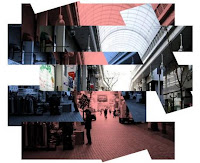By - Anoop Jha
A case of tribal communities and regions
We need to question our own intention of doing right and doing good thing to others. May be what we think is right for someone or some community might not be that good for them as we assume.
Who is to decide what is good for whom? Is it the job of government? or maybe the Highbrow society? Or socially, politically and intellectually established individuals with their idiosyncratic ideology and philosophy having their own idea of utopian society? Is it the job of little advanced segment of society to decide what is good for not so advanced segment of society?
[Handpicked Books]
What could be the hidden intention behind doing good to others or some community or some region, which we call development work or at times social service? Let’s take the example of tribal community and tribal region. Is it the shear innocent intention of sharing existing wealth and knowledge to unprivileged or unexplored segment of society or is it to exploit the untapped potential of the previously unexplored tribal region for our own advantage, is it a sincere effort to understand and document the needs and social pattern of these tribal communities or is it just to get commercial advantage by exposing these hidden communities to mainstream society, is it to help them learn utilize their own resources more efficiently or the hidden intention to exploit rich tangible and intangible tribal resources. Is it to provide them better health, better opportunities and better lifestyle or is it just shear gratification of doing social service. Has that road been built to connect those hidden tribal communities to the mainstream society and to provide them new age opportunities and facilities or the intention is to extract the tribal wealth of region and exploit the heritage and culture value in form of tourism and all.
Shy and conservative tribal communities throughout the world need very little for their living; they are an autonomous society in themselves. They have been adapted to their environment in course of evolution and their local environment usually provides them all they need- food, shelter, social interaction, entertainment, spiritual satisfaction. Now there are few choices to make. One is to let this situation of apparent equilibrium of autonomous tribal community go ahead as usual and second to interfere and change the equilibrium either for their good or for own advantage which seems to be the case most of the time. This is a sensitive and tender issue has to be dealt with much thought and compassion. Social behaviors, norms and needs of tribal communities are mostly way different then the mainstream, so simply imposing the rules of mainstream society on the said communities might not do justice to them. For example the concept of formal education might be something totally alien to many tribal communities, so simply introducing the primary and secondary education system to those communities might not be a good idea just because we want everyone in the country to be literate, may be they simply don’t need a formal education, may be they need a different kind of skill orientated education, may be they need an education system totally different from mainstream society. There are many such issues to address and subject of discussion.
Until they all arrive at a consensus, role of government in the mean time can be to protect the tribal communities and regions from external commercial invaders, and provide them the health infrastructure with emergency facilities.











